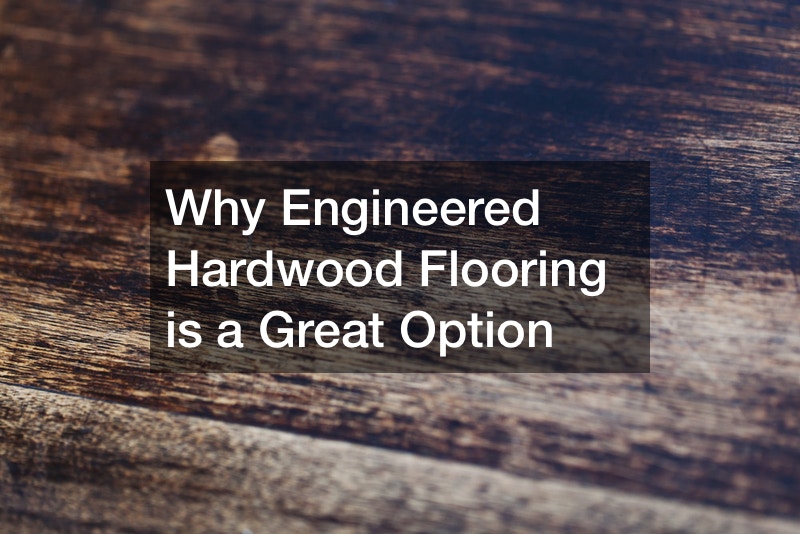

When you think of Las Vegas you probably think of a loud, bustling party city filled with tourists, neon lights, and rows of casinos on the Strip. However, the city of Las Vegas has begun to change as more and more people have started to settle down in the city. In fact, the Las Vegas Strip is actually just one small part of a much larger metropolitan area that stretches out over 600 square miles in the Las Vegas Valley. This area is actually one of the best places to buy a house in the state. However, the inventory for homes is small. If you are interested in buying the house of your dreams in Las Vegas, you will want to act fast.
Buying a house in Las Vegas, or anywhere for that matter, is a huge decision as well as a large investment. There may be a lot you still need to learn before making this decision. Based on factors like neighborhood, budget, and lifestyle, here is why buying a house in Las Vegas is the right choice for you.
Housing Types in Las Vegas
The most popular type of house found in Las Vegas is a traditional single family detached home. This type makes up over 60% of the homes throughout the city. Like most metropolitan areas, Las Vegas offers housing options for almost every budget and preference, such as duplexes, large apartment complexes, row homes, and homes that have been converted to apartments. Everyday in Las Vegas, new homes are being built or put on the market, but right now the demand for new homes is very high while the supply is relatively low. If you are looking into buying a house in Las Vegas, here are some the options you will have in terms of home styles:
Ranch
A ranch style home is usually a single story home built in the shape of the letter L. This style of home also usually has an open concept and layout with not very many interior walls. Materials such as vinyl, brick, or wood are typically used for the exterior walls. In Las Vegas, a split level home is a popular variation on the ranch style home, which will generally include a family room, dining room, and traditional eat in kitchen on the first floor, and then bedrooms on the second floor. If your home has a backyard, fence builders can transform your backyard into a beautiful, safe space that you can enjoy for years to come.
There are a few types of homes that are less common but still prevalent in the city of Las Vegas, such as Tudor, Spanish, Pueblo, and Mediterranean style homes. A Tudor style home is very recognizable because of their steeply pitched roofs, front facing gables, brick exteriors mixed with half timbering, and stucco filling in the spaces between. A Spanish style home gets its distinguishable features from early Spanish mansions, which include curved roof tiles, a stucco exterior, arched doorways, and decorative tiles.
The Pueblo style home has its roots in the states of Arizona and New Mexico. Pueblo style homes are traditionally made out of adobe which is sun-dried mud, but they can also be fashioned from concrete or stucco. Its distinguishing features are a flat roof, rounded exteriors, and square windows. Mediterranean style homes are based on an architectural style that attempts to capture the essence of southern European design. A Mediterranean style home generally features a stucco exterior, terracotta or concrete roof tiles, and an open concept with dramatically high ceilings.

Regardless of what style of home you prefer, approximately 80% of the homes in Las Vegas are occupied by their owners. In the mortgage world, if the borrower lives in the home, they receive numerous benefits such as less down payment, better interest rates, and more loan options. If you are in the market for a home in Las Vegas you can expect to find most of the homes to be in fantastic shape. This is because of a building surge that the city has been experiencing since the beginning of 2018. As a result, there are a plethora of opportunities for construction.
If you are familiar with interior design trends in Las Vegas, such as classic granite countertops and wood or travertine cabinets, you may notice these trends are gone in favor of gray floors and quartz countertops. Today, you would be hard-pressed to find a new home in Las Vegas that does not have these design features. Another prevalent real estate trend in Las Vegas is buying homes that are for sale, renovating them, and then selling them for a profit. This trend is referred to as iBuyers, meaning instant buyers. When buying a house in Las Vegas, it is important to be wary of iBuyers cutting corners when renovating or remodeling or taking shortcuts to conceal defects in the home.
Las Vegas Climate
Due to the climate of Las Vegas, each of these architectural styles previously listed relies heavily on plaster and stucco as building materials. Las Vegas is located in the middle of the Mojave Desert, and therefore experiences an average yearly rainfall of just 5 inches, compared to the United States average which is 38 inches. Because of the desert climate, residents of Las Vegas also note the easy to maintain landscaping as a major perk.
Las Vegas also sees 294 days of sunshine, while the average for the United States is 205 days. During the summer, daytime temperatures will easily surpass 100 degrees, while daytime temperatures during the winter months will range anywhere from 50 to 60 degrees with lows dropping all the way down into the 30-degree range. Because of the extreme heat Las Vegas experiences, air conditioning installations is an extremely popular service that is provided. While a few may consider the oppressive heat to be a downside of the Las Vegas climate, many consider it a fair trade-off for the other benefits the Las Vegas climate has to offer. The city is virtually free from all the hazards that other warm climates face, such as hurricanes, floods, tornadoes, earthquakes, and severe snowstorms for instance.
Real Estate Budgeting in Las Vegas
According to information compiled by the Greater Las Vegas Association of Realtors in November of 2019, the median price of a home located in the city of Las Vegas is about 300,000 dollars. Compared to the median prices in other major real estate markets in the United States, the Las Vegas area provides great value for your money. In addition, homes in Las Vegas will usually only sell at the listed price if they are well furnished or equipped. Otherwise, homes generally sell below the listed price. If you are unsure what you can afford to buy and need help, there are many home affordability calculators online that can assist you simply by entering basic information such as location, gross annual income, savings, and credit score.
When considering your budget, the price of your home is merely one number you will have to think about. You also need to consider the price of closing costs, which fall in the 2% to 5% range in the state of Nevada and the cost of your monthly home mortgage loan, which should include the principal and interest on your loan. In 2012, approximately 81% of home buyers opted for a fixed rate mortgage to finance their house.

When buying a house in Las Vegas, other important expenses to include are the price of property insurance and property taxes. However, Nevada’s property tax rates are some of the lowest in the United States. The average effective property tax rate in the state is 0.69%, which falls way below the national average of 1.08%. Another one of the best upsides of buying a house in Las Vegas is that the state of Nevada has no personal income tax. This means that the money you save here can be put towards that perfect home.
A home inspection is another expense you will likely have to incur. A home inspection checks the condition of the construction, drainage, driveway, electrical systems, and plumbing. If you have issues with the electrical components or plumbing, contact local plumbing services or electricians.
When considering your budget for buying a house in Las Vegas, you should definitely be thinking about solar panels for your home, which are becoming increasingly popular across the country and in Las Vegas in particular. When shopping for solar panels, you will probably come across four different options. They are leasing, fully owned, a solar loan, and a program known as PACE which finances solar panels. This acronym stands for property assessed clean energy.
Finding a Home in Las Vegas
The city of Las Vegas is a lot larger than you may think at first. Other than the center city, there are other metropolitan areas in every direction. Therefore, choosing a location to buy a home can be a difficult decision. You will want to choose a neighborhood that matches you or your families’ lifestyle. When choosing a neighborhood in Las Vegas, there are a few factors you should consider, such as local amenities, commute to work, and closeness to family or friends. Some of the best areas to buy a home in Las Vegas include the Strip, Downtown, and Metro area.
The Strip
Living on the Las Vegas Strip provides everything that living in a big city has to offer, along with thousands of tourists coming through at regular intervals. Living on the Strip will provide convenient access to all the amenities Vegas has to offer, such as shows, restaurants, and casinos. Although, the city can come with many temptations as well. If you or someone you know has a gambling problem, contact a gambling addiction treatment center nearby. Because of the massive influx of tourists to the Vegas Strip, you will have many opportunities for renting your home out to tourists on vacation. The only drawback to living on the Strip may be the premium price tag.
Downtown

The Downtown area is often confused with the Strip. Downtown Las Vegas was much more popular during the 1950s and 1960s but fell out of favor after the Strip was built. Although, the Downtown area has recently been imbued with new life and vitality. The Downtown area is now home to artisanal restaurants, coffee shops, tattoo parlors, and furniture stores. Right next to the Downtown area is the Arts District, which features an eclectic mix of small boutiques that sell clothing, art, and furniture. The Arts District is a great option if you wish to experience the hustle and bustle of the city at a much lower price.
Metro Area
Right outside of center city Las Vegas lies its multiple metro areas. Here, there are thousands of acres of developments referred to as master planned communities. In these areas, housing has been built with the objective of providing a luxurious lifestyle in mind. The metro area is like a small city of its own with all the perks it has to offer, such as trails, parks, shops, schools, and child care programs. Each community generally has its own homeowner’s association, policies, features, and price ranges. These neighborhoods in the metro area also provide a wide range of affordable apartments, condos, and luxury homes.
Las Vegas Attractions
As you probably already know, Las Vegas offers more enticing attractions than probably any other city in the United States, including casinos, magic shows, fun bachelor parties, Cirque du Soleil, and world-famous restaurants. This is not to mention the attractions found just outside the city, such as hiking and biking.
Buying a House in Las Vegas

Historically, the best time for buying a house in Las Vegas is over the winter. Recently, vacant homes in Las Vegas have been selling very quickly. In fact, from July of 2017 to July of 2018, 50,000 people from California moved to Las Vegas, which drastically lowered the supply of real estate in Las Vegas and therefore raised prices. If you are thinking about buying a house in Las Vegas, do not wait. Contact a real estate agent right away to get the process started. Some of the most experienced real estate agents in Las Vegas can save you up to 7.2% on your purchase. With these tips for buying a house in Las Vegas, you can save that and much more as you find your dream house.



